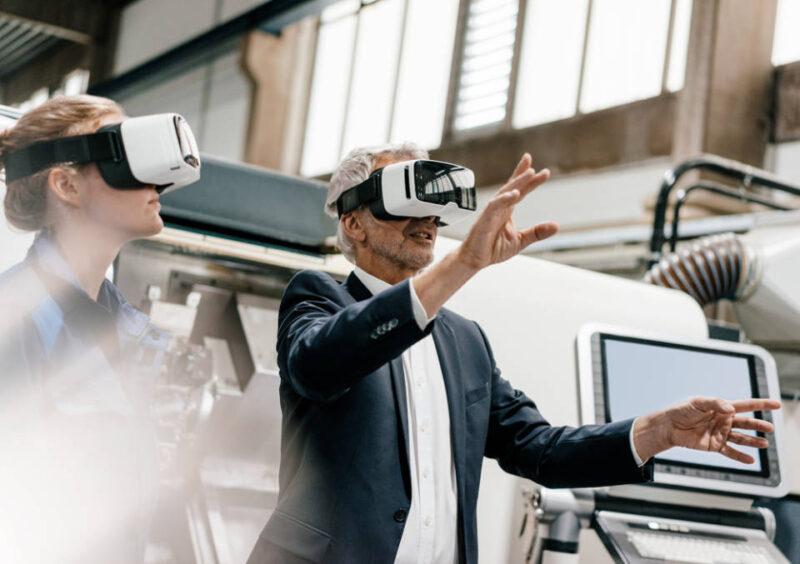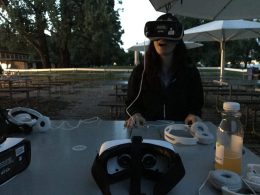With the Metaverse, a new world is emerging that brings with it great potential for innovative retail.
The metaverse is not a finished product, rather it is in the process of emerging and growing - and it is still unclear how it will develop in the coming years and decades. Companies are shaping this world just as much as the users, who influence it through interaction. It is already certain that the retail trade in particular will benefit from the metaverse, as companies strengthen or expand their core business in it. New sales locations will be generated, new target groups reached and new products offered. Overall, McKinsey expects a market of 5 billion dollars for the entire metaverse by 2030. According to estimates, more than half of this will be generated by e-commerce.
First shops in the Metaverse - Swiss brands are also already part of it
In order to highlight the current trends and future possibilities of the Metaverse and to exchange know-how, the Future Retail Switzerland trend platform held the Future Retail Conference by. SAP acted as host of the event. The question "How are digitalisation and the metaverse revolutionising the retail trade?" was the thematic focus, but use cases, concrete examples and potential scenarios were also presented and discussed. Various companies have also expressed a keen interest in activities in the metaverse.
Some are already represented in the new, virtual world. For example Ralph Lauren, H&M or the watch brands Beyer and Breitling, but Jelmoli is also active in the Metaverse. Switzerland's oldest department stores', for example, has presented a clothing collection exclusively in a Metaverse fashion show, as we reported.
Real and virtual products
The products purchased in Metaverse shops can be sent to the customer's home in real life or used virtually. After all, the personal avatar in the Metaverse is supposed to put on the same clothes and wear the newly acquired exclusive watch on his wrist just like his real role model. The watch shop Beyer offers such virtual watches for avatars. Watch manufacturer Breitling, on the other hand, wants to uniquely identify each watch via blockchain and NFT and thereby confirm the warranty. In this way, they protect themselves against counterfeits, can track down stolen watches and know when, where and by whom each model was sold.
Improved customer experience
Not only retailers but also customers benefit from trading in the metaverse - especially through an improved customer experience. Although a physical visit to the shop is not necessary, realistic experiences can be had in the shop via VR glasses. While avatars, AR and VR are already established in the gaming world, these technologies are still completely new for retail.
The metaverse is not cut off from the real world, but intertwined with it. Similar to AR, connections between the worlds are created for both providers and consumers. The world visualised in 3-D certainly brings shopping advantages: Unlike conventional online shopping, clothes can not only be viewed in pictures, but also tried on via avatar. After all, the avatar has exactly the same body dimensions as its real-life counterpart and it is hoped that this will reduce the number of returns.
"An important basis for increased customer acceptance and monetisation of the market is a secure and simple payment process with cryptocurrencies," says Thomas Mayr, Industry Advisor for Consumer Products & Retail at SAP Switzerland. Worldline, one of the world's largest payment processors, already offers a crypto payment product for eCommerce and PoS, but also for the Metaverse, in collaboration with Bitcoin Suisse. "Paypal, Visa and Mastercard are also working on enabling crypto payments via their infrastructure."
One metaverse or several metaverses?
"For an extended shopping tour through different shops in the metaverse, well-functioning interoperability is needed, i.e. the possibility to connect different offers, spaces and types of use," says Thomas Mayr. "The goal is a seamless experience where consumers can bring their avatars, digital assets and currencies from one platform to another." This seamlessness will also be one of the biggest challenges in the metaverse. Although there are already various metaverse platforms such as Decentraland, Horizon Worlds or Roblox, it will probably take decades before a unified metaverse emerges.
Source: computerworld









